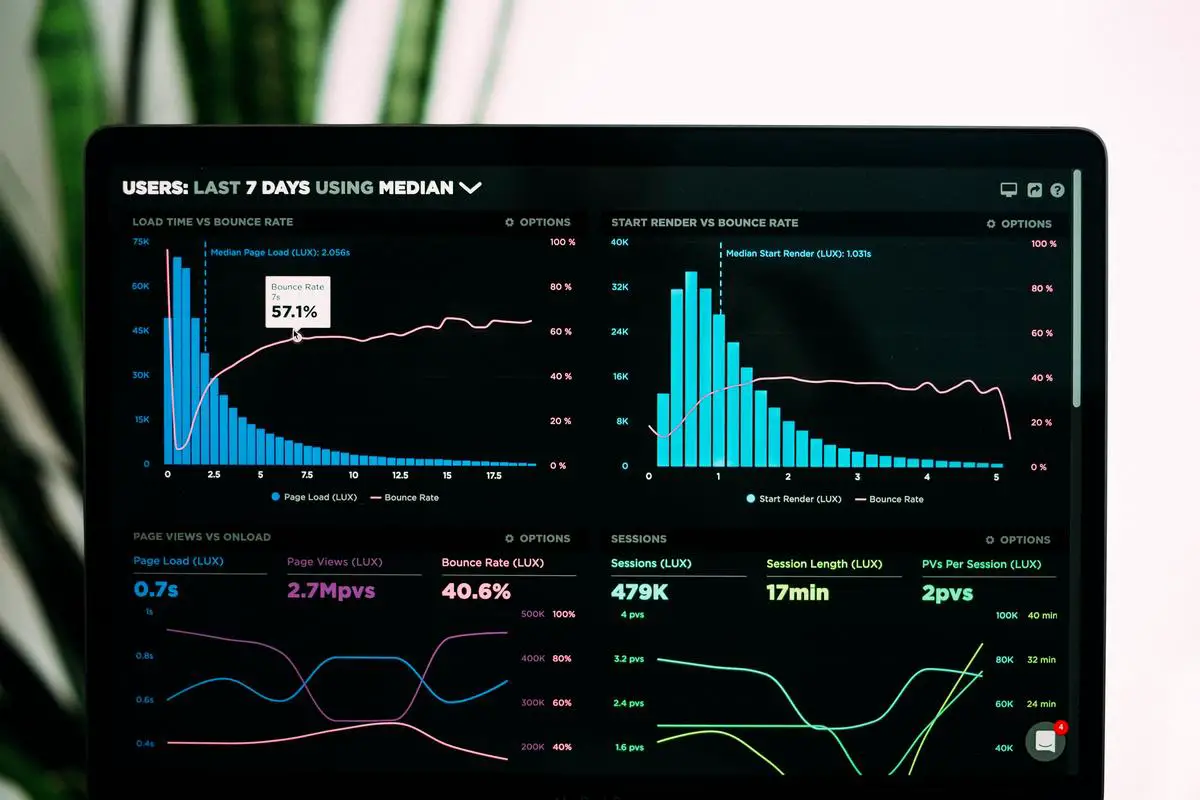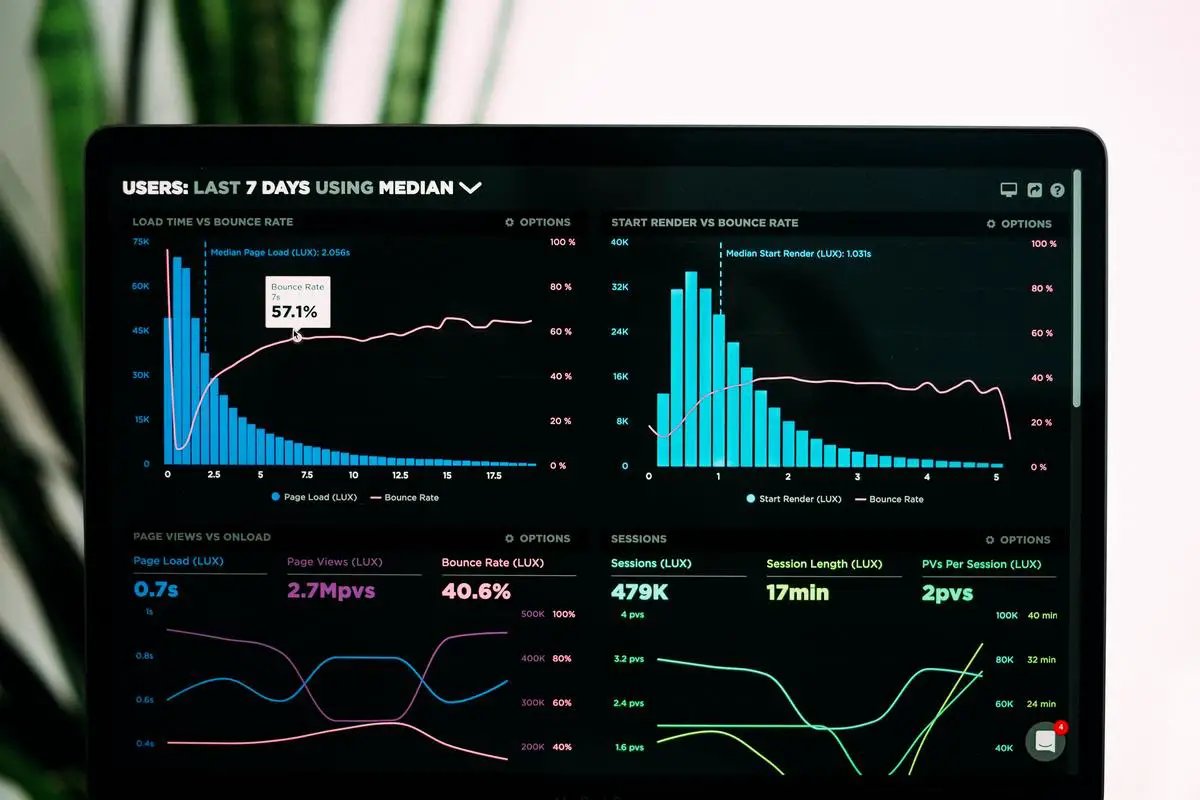In this digital age, having the ability to track, understand and optimize user interactions is essential for any online platform. One of the key tools in achieving this is Google Analytics 4 (GA4), which takes user interaction tracking to the next level with its Custom Events feature. Custom events allow for not only tracking a variety of interactions users have with a website but also customizing such interactions to best suit the company’s needs. Within this comprehensive breakdown, we dive into all there is to know about GA4 and Custom Events from initial setup to data analysis and best practices.
Understanding GA4 and Custom Events
Introduction: Exploring Google Analytics 4 and Custom Events
Google Analytics 4, often referred to as GA4, represents the most recent iteration of the powerhouse analytic tool touted by Google. Recognized for its extensive array of capabilities, Google Analytics has become a staple for those aiming to derive key insights from their online operations.
GA4 rallies behind an emphasis on event-based tracking. This shift allows for superior comprehension and detailing of how users interact with a website. One crucial aspect of this new paradigm is what is known as custom events.
Custom Events in GA4: A New Frontier in User Interaction Tracking
GA4 custom events function as a key mechanism to track and initiate an understanding of how users interact with your site. In more rudimentary terms, an “event” within the context of GA4 can be likened to a particular action made by a user on your website. This action could be anything from clicking on a specific button, completing a form or even scrolling down a page.
The term “custom” precedes “event” due to the tailored nature of what’s being tracked. Unlike automatic events that GA4 natively keeps tabs on (such as page views or app starts), custom events enable you to track user activity of specific interest to your operation, offering a greater depth of insight into user behavior.
Why Custom Events Matter
GA4 custom events might seem like a term that only concerns tech-savvy individuals or web developers. However, if you run a website or are engaged in the digital domain, understanding GA4 custom events holds incredible value. This is because custom events provide an in-depth look at how users interact with your website.
The crux here lies in the acquisition of pertinent data. Automatic events gather useful yet generalized pieces of information. But if you need more specific insights, custom events are your trump card. By singling out distinct interactions, they can be used to enhance your website, create a better user experience, and ultimately bolster your online presence.
They function as diagnostic tools, aiding you in tracking trends, usage patterns, obstacles, and triumphs on your site. This allows you to discern effective call-to-action prompts, discover engaging elements on your site, and even pinpoint obstructions in your conversion process that might be limiting your growth.
Coming to grips with GA4 custom events and weaving them into your strategy can provide a favorable position in the digital world. Think of it as a microscope, zooming into the intricate details of user behavior, thus making decision-making more data-driven.

Setting Up GA4 Custom Events
Deciphering GA4 Custom Events
What exactly are Google Analytics 4 (GA4) Custom Events? Simply put, they are trackable user interactions with content. This includes actions like downloading a document, clicking on a link, submitting a form, playing a video, and many others. GA4 empowers businesses and organizations to gain a wider understanding of the manner in which users engage with their website or app, which can immensely enhance the user experience.
Accessing and Creating GA4 Custom Events
The first step towards setting up GA4 Custom Events is to access GA4. To do this, you sign into your Google Analytics account. If you don’t already have an account, you will need to create one. Once logged in, you can then proceed to the GA4 set-up process.
In terms of creating and defining a custom event, you need to navigate to the Events section in your Google Analytics dashboard. Here, you’ll find a list of predefined GA4 events which you can modify. If what you’re interested in tracking is not listed, you can create a new custom event by clicking on the “Create Event” button.
Defining Custom GA4 Events
Once you’ve created a new event, you’ll need to define it. You’ll be prompted to provide an Event Name and an Event Parameter. The Event Name should be descriptive and specific, so you can easily identify this event later.
An Event Parameter, on the other hand, provides additional details about the event. For example, if your event is ‘Button Click’, optional parameters could include ‘button_location’ or ‘button_color’. The number of parameters you can add to an event is unlimited.
Testing and Verifying GA4 Custom Events
After defining all the necessary details for your custom event, the last step is to test it. This process checks that the custom event you have created is working properly before it is finally implemented on your website or app.
Select the ‘Test Events’ option located on the left-hand side of the Google Analytics interface. Click on your new custom event and navigate to the ‘Test Event’ tab. If your custom event is tagged correctly, you’ll see the events in real-time.
Once your custom event is tested and verified, it’s time for you to apply the event to your website or app. This process may vary depending on your site or app’s structure. However, ensure that your custom event is implemented on all the corresponding pages or sections where event interaction with users may occur.
GA4 Custom Events Data: A Powerful Tool for Analysis
Custom events data in GA4 serves as a remarkable tool for assessing user engagement, behavior, and conversion rates, among others. For instance, you might create a custom event for ‘Newsletter Signups’. Here, you can monitor the number of users signing up for your newsletter, the timing of their signups, and the specific website pages that generated the most signups. This form of data provides critical insights, playing a central role in shaping your ongoing marketing plans.
GA4 also offers the functionality to export your custom events data, enabling further analysis or integration with other available tools. This feature is particularly beneficial for businesses and developers aiming to enhance user experience comprehensively.

Types of GA4 Custom Events
Understanding GA4 Custom Events’ Structure
GA4, short for Google Analytics 4, stands as an efficient tracking instrument. Contrary to Universal Analytics that focuses on sessions or pageviews, GA4 uses events, which signifies any significant action initiated by a user on your app or website. This can include clicking a button, submitting a form, making an e-commerce purchase, and more. While GA4 inherently tracks numerous such events, it also provides the flexibility to define and monitor custom events, catering to your unique requirements.
Types of GA4 Custom Events
GA4 custom events come in numerous forms to gauge different forms of engagement. Each event type has its unique purpose and benefits.
User Engagement Events
These events provide insight into how people are interacting with your content. The benefit of tracking user engagement events is that they can help you understand which parts of your website or app hold user attention and spark action. For example, scroll events indicate how far down a page a user scrolled, showing which content engages users the most.
Ecommerce Activities
For e-commerce, GA4 allows tracking events such as begin checkout, add to cart, purchase, generate leads, refund, and more. By tracking these events, you can understand the journey of a customer from product discovery to the final purchase. It gives you valuable data on which products are attracting users, the rate of cart abandonment, and conversion trends, enabling you to make data-driven decisions to boost sales.
Custom User Properties
Aside from pre-defined events, GA4 lets you set up custom user properties. These events help you track data that’s unique to your business, like membership status, user-type, incentives, etc. They offer insights into trends, helping you create personalized marketing campaigns and enhancing customer experience.
Error Events
These events can help you track issues or bugs on your website or app. By gauging error events, you’ll understand the problems faced by users, and isolate areas that need attention and rectification.
Unlocking the Potential of GA4 Custom Events
With GA4, you’re not confined by predetermined events. The ability to develop custom events grants you the opportunity to align perfectly with your specific business objectives. Custom events enhance your capacity to collect significant data that bears relevance to your enterprise, providing insight into your user behaviors, predilections, and real-time interactions.
Moreover, these custom events in GA4 act as benchmarks for your user’s journey. They allow you to understand what elements provide value and identify potential areas for refinement. Utilizing these insights, businesses can make strategic, data-backed decisions aimed at enhancing user experience and overall enterprise performance. From tracking user engagement to monitoring e-commerce activities, GA4’s adaptability marks it as an indispensable component of any robust marketing strategy.

Photo by lukechesser on Unsplash
Analyzing Data from GA4 Custom Events
Deciphering GA4 Custom Events
Google Analytics 4, known as GA4, presents extensive data analysis alternatives that were previously unavailable. A distinctive feature of GA4 is its capability to construct custom events. These specialized trackers, different from the auto-generated events by GA4, are purposed for monitoring user interactions, usage trends, behaviors, and more.
Custom events offer profound insights into the way visitors navigate your website and interact with your content. This knowledge can guide your business decisions, fine-tune your marketing approaches, enhance your website’s functionality and user experience, and ultimately provide a significant upswing in your sales or conversions.
Creating GA4 Custom Events
Creating custom events in GA4 is quite simple. All you have to do is access your GA4 property and then choose the appropriate events from your app or website. You can customize these events based on your business needs.
When you create a custom event, you’re essentially creating a customized path for analysis, tracking, and optimization. You’re also able to assign parameters to custom events for increased granularity and specificity.
Analyzing Data from GA4 Custom Events
Understanding how to analyze data from GA4 custom events is crucial to maximize the benefits of this feature.
One way is to use the GA4’s Analysis Hub that offers a variety of templates for analysis. The outlay of data is quite versatile – you can have it presented in a table, a graph, or a path. These diverse visualization options make it easier to comprehend data trends.
In addition, you can isolate the behavior of one or more specific groups of users through a process called segmentation. Incorporating additional dimensions and metrics to these segments can give you a profound understanding of your customer’s journey.
Remember that it might take time for GA4 to collect enough data before you can see valuable insights. Patience is an essential part of the data analysis process.
Boosting Web Performance through GA4 Custom Events
Examining the results gathered from GA4 custom events can greatly advance your website’s overall performance.
For instance, detecting a specific phase in the purchasing process where a significant number of users tend to discontinue may indicate a need to refine that part of your website to eliminate any possible hindrances.
This data can also be utilized to calibrate your promotional and retargeting endeavors. Identifying which items or pages draw the greatest attention or which channels generate the most traffic can assist in formulating more successful and tailored campaigns.
In addition, you may observe trends in user behavior that could influence the design and layout of your site. If it is noticed that users who view a video have a higher probability of making a purchase, making videos more visible on your homepage could be beneficial.
In brief, information from GA4 custom events can aid in recognizing potential opportunities for enhancements and expansion in various areas of your online enterprise.

Photo by lukechesser on Unsplash
Best Practices for GA4 Custom Events
Deciphering GA4 Custom Events
Google Analytics 4 (GA4) is a distinctive tool designed to aid in understanding user interaction with your website or app in a more detailed manner. Particularly, GA4 custom events, which are a fundamental component of this tool, are capable of monitoring unique actions or engagements specific to your site or platform that surpass the conventional events monitored by Google Analytics, including page views, session commencements, or initial visits.
Creating Custom Events
Any interaction can be tracked as a custom event in GA4 ranging from mouse clicks, form submissions, video plays, social media shares, and more. To create a custom event, first identify the user interaction that you want to track. Next, use the ‘logEvent’ method in your GA4 code to log the event. Remember to give your event a name, and optionally, you could include additional parameters to provide more information about the event.
Best Practices for Implementing GA4 Custom Events
- Plan Ahead: Have a clear plan regarding which events to track depending on your website or app objectives. This will help give structure and purpose to your relationship with GA4.
- Naming Conventions: Ensure your event names are consistent and descriptive. This will keep your events clean, organized, and more manageable as you implement more custom events.
- Detailed Documentation: Document each custom event you implement. This will help you track your history and remember why certain decisions were made, particularly when you’re dealing with numerous events.
- Utilize Parameters: Make use of parameters to enrich the data from your events. Parameters can provide additional context and details about the interactions you’re tracking.
- Test Your Events: Always test your custom events before fully implementing them. This will ensure that they’re working as intended and giving accurate data.
Best Practices for Utilizing GA4 Custom Events
- Analyze Your Event Data: Regularly analyze the data from your events to identify behavioural trends and insights that can inform your strategies.
- Optimize User Experience: Use your custom event data to understand how users are interacting with your website or app, and identify areas where the user experience can be improved.
- Inform Your Marketing Strategies: Understanding which events drive the most engagement can help inform your marketing strategies and focus your efforts on the areas that provide the most return.
GA4 custom events offer a powerful way to gain deeper insights into user behavior and interaction on your platform. By implementing and utilizing these events effectively, you would be able to make informed decisions, optimize user experience, and improve overall performance.

As you venture on the path of understanding and maneuvering GA4 custom events, it is paramount to remember that the real power of data lies in how it’s interpreted and applied. From harnessing a better understanding of user behavior to optimizing user engagement, GA4 custom events can transform the way you interact with your audience. This guide is not merely a walkthrough but a toolkit that helps you elevate your website performance by employing these advanced tools in the most effective ways. Embrace the power of GA4 custom events and let data drive your decision-making.

